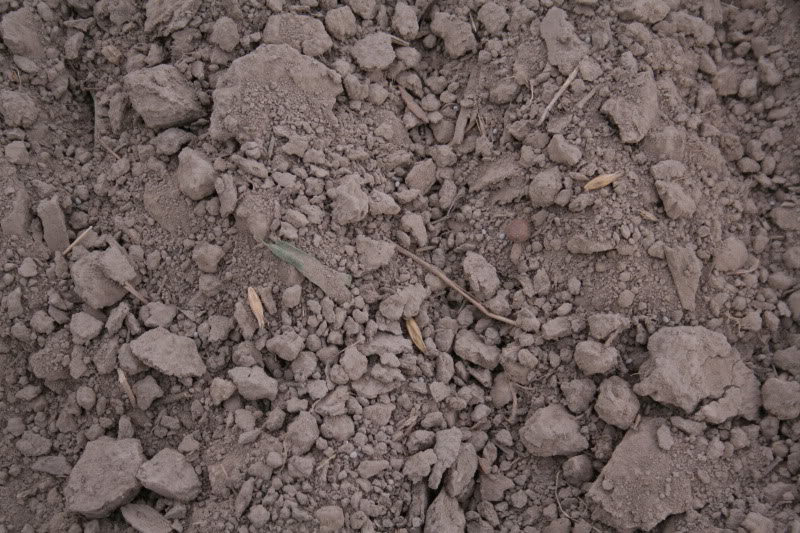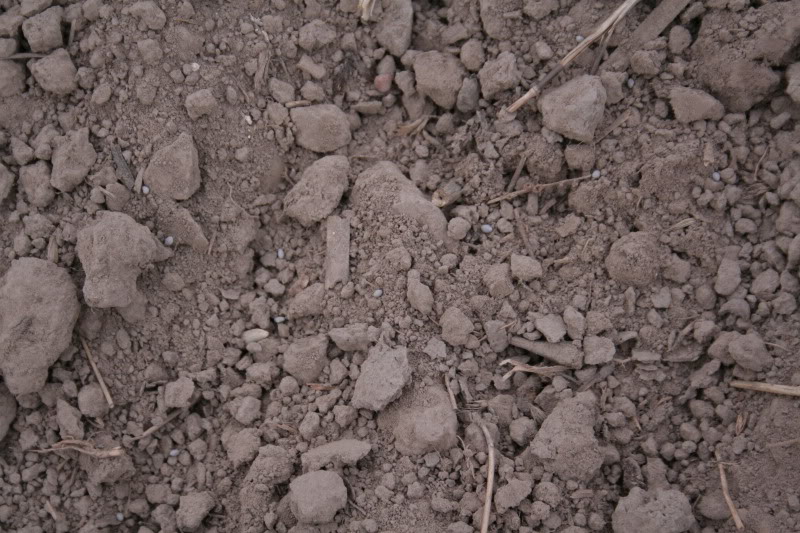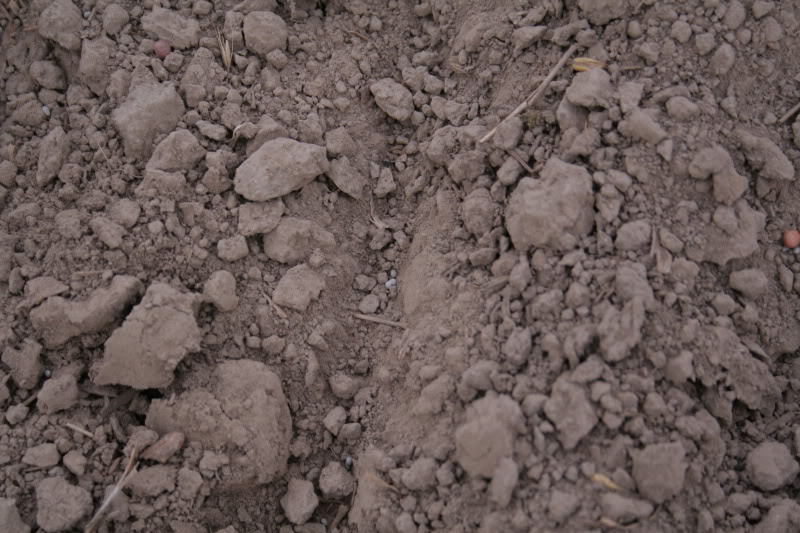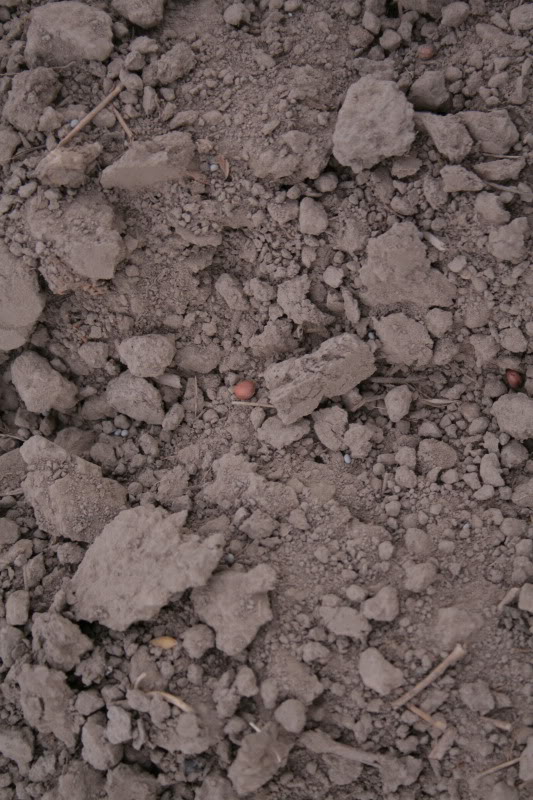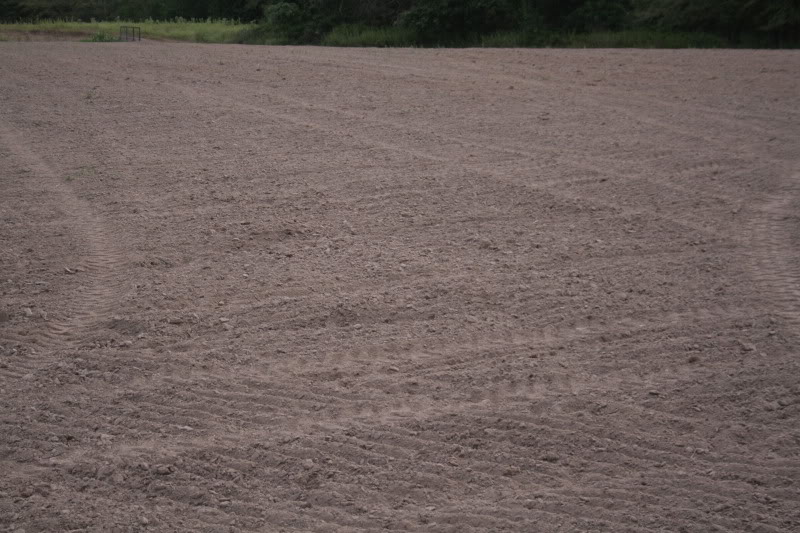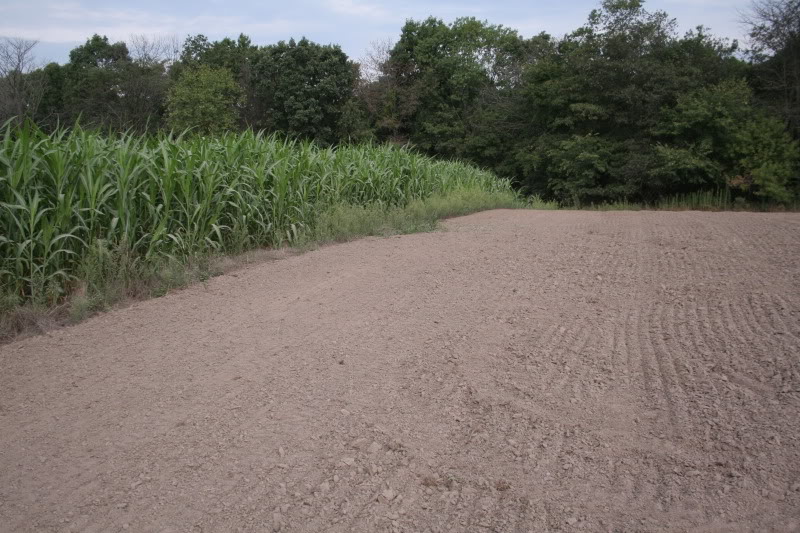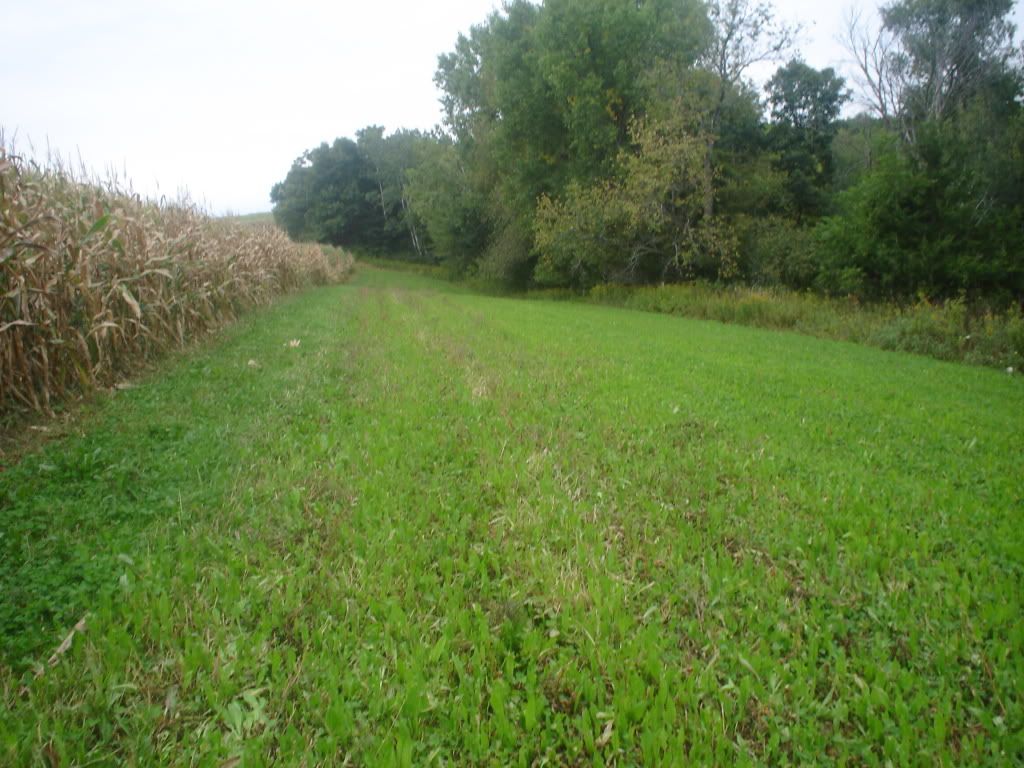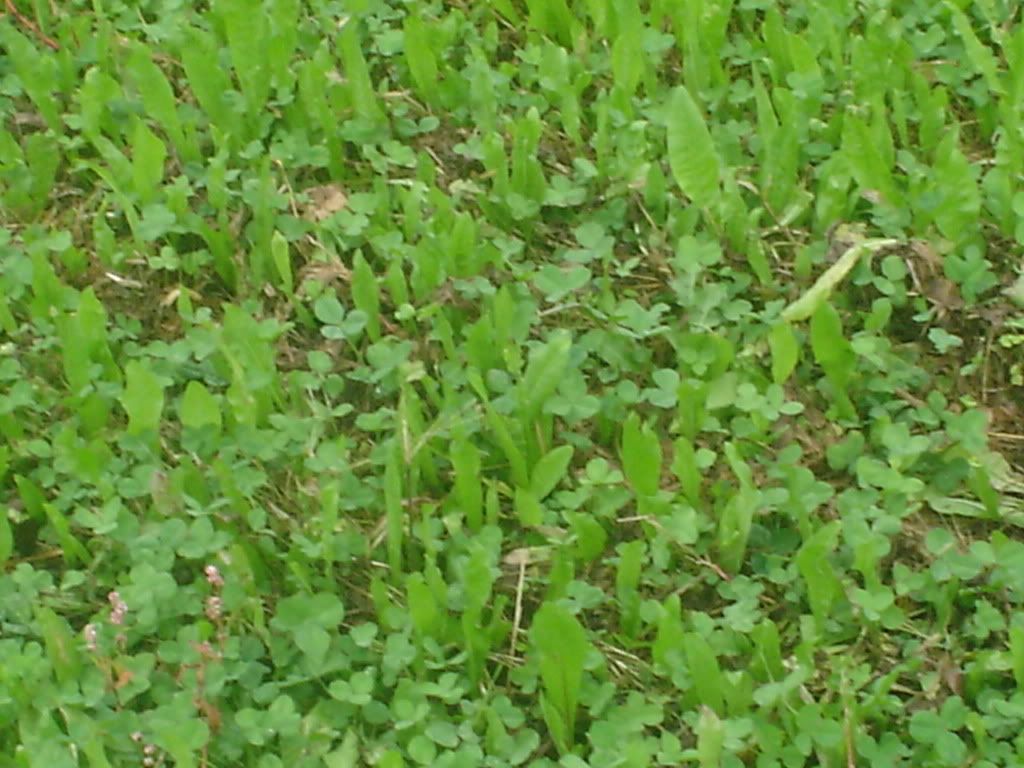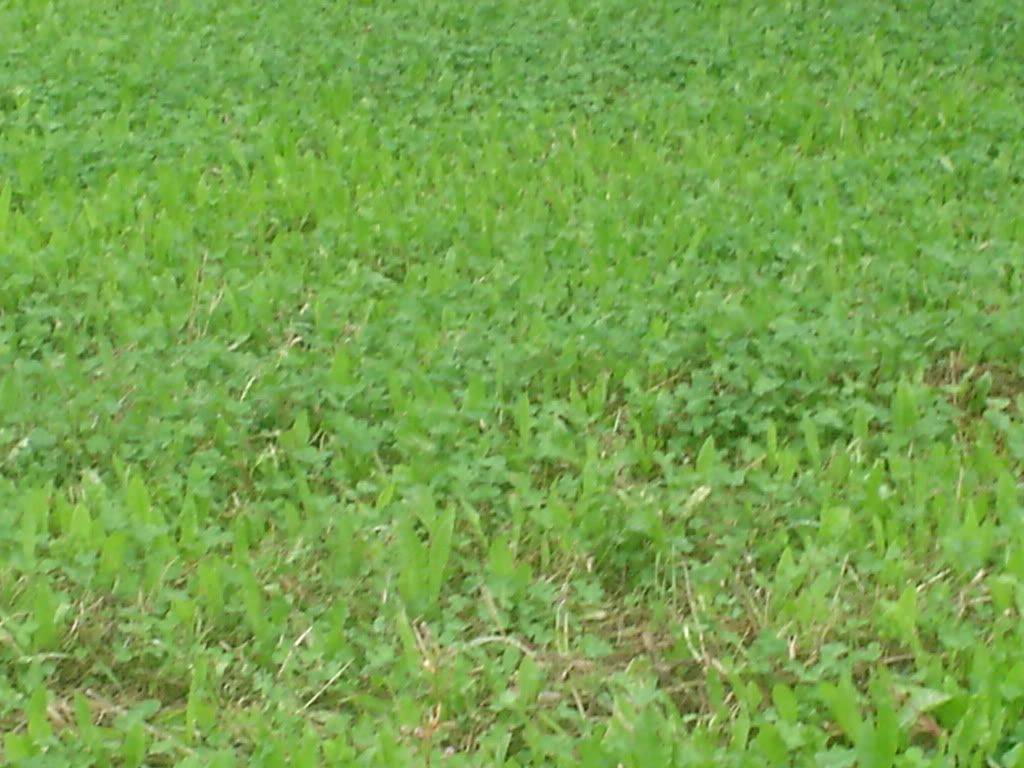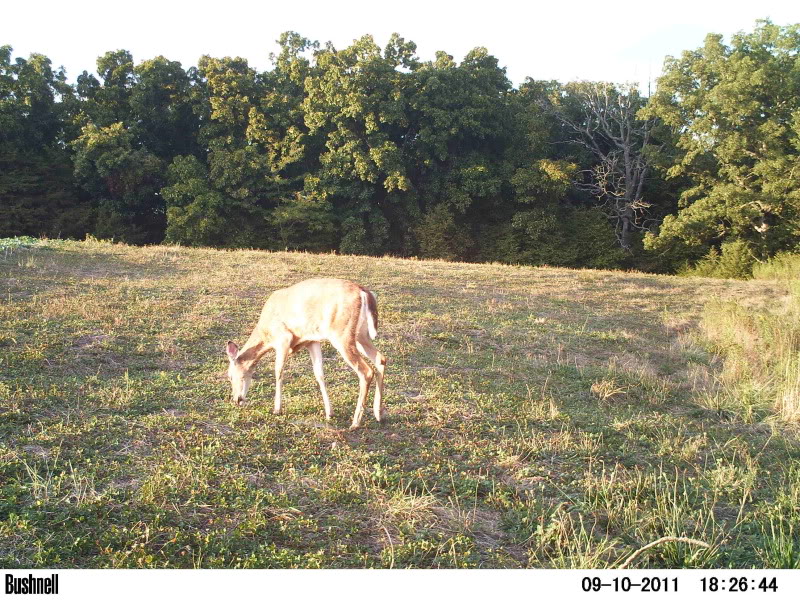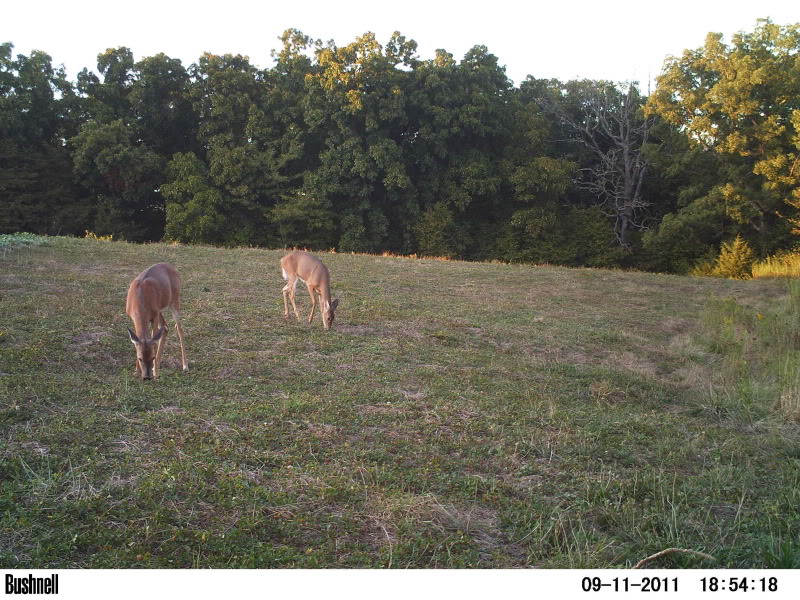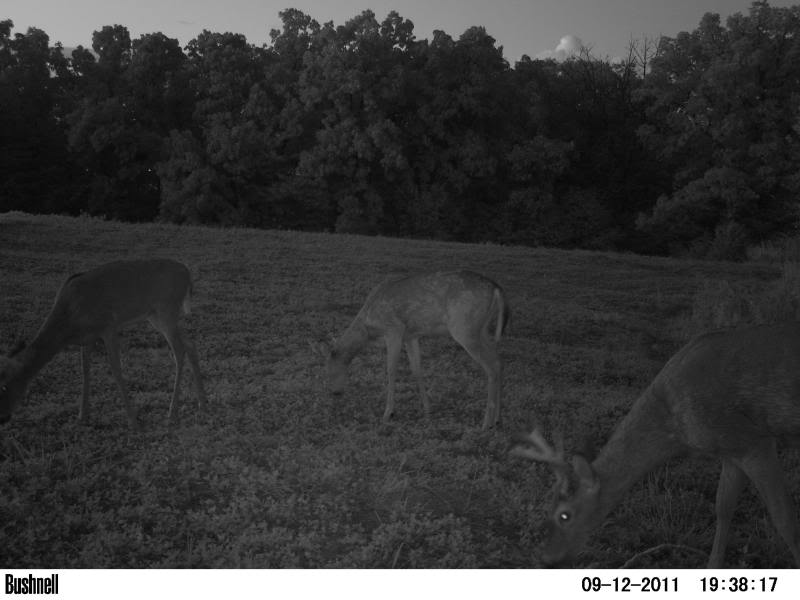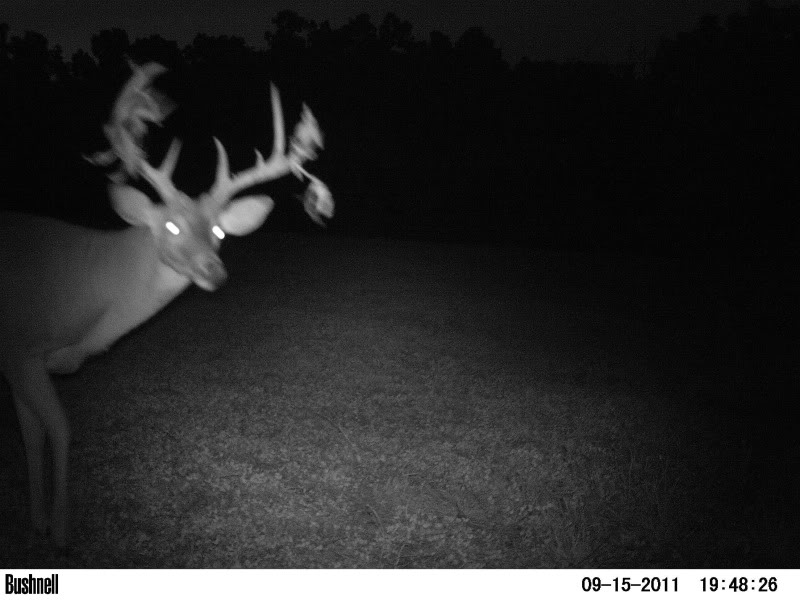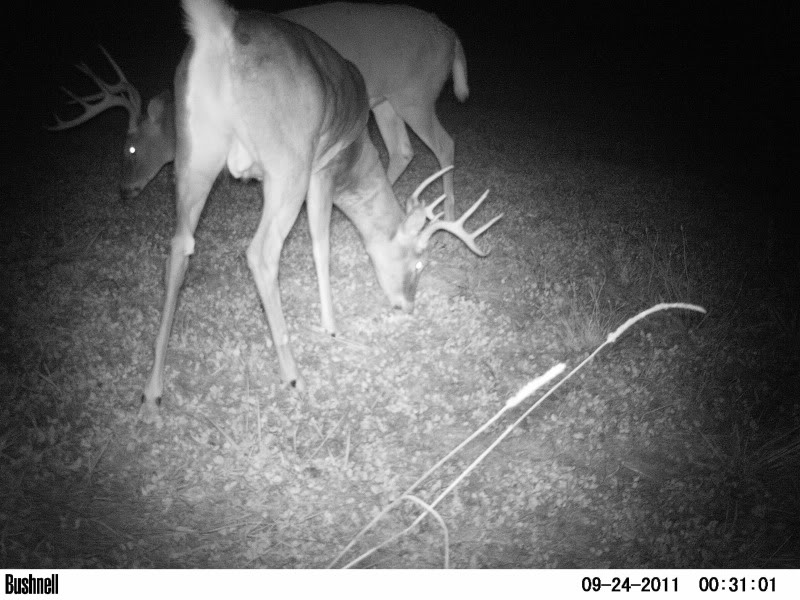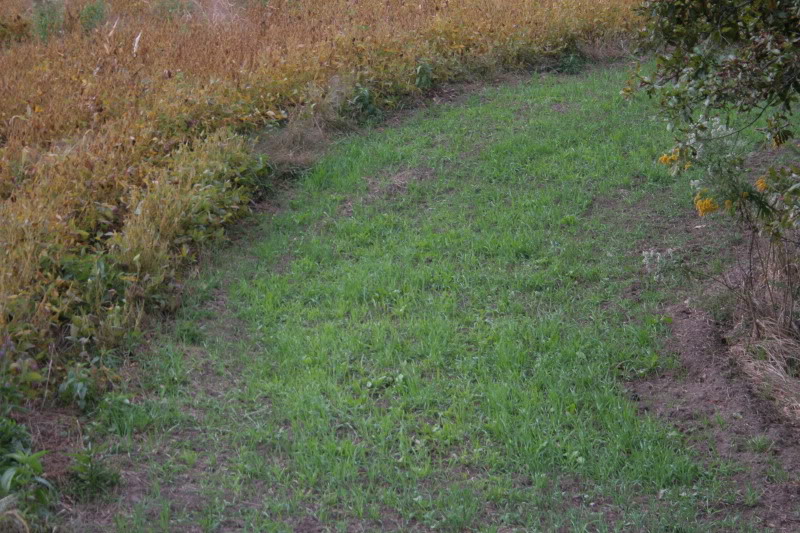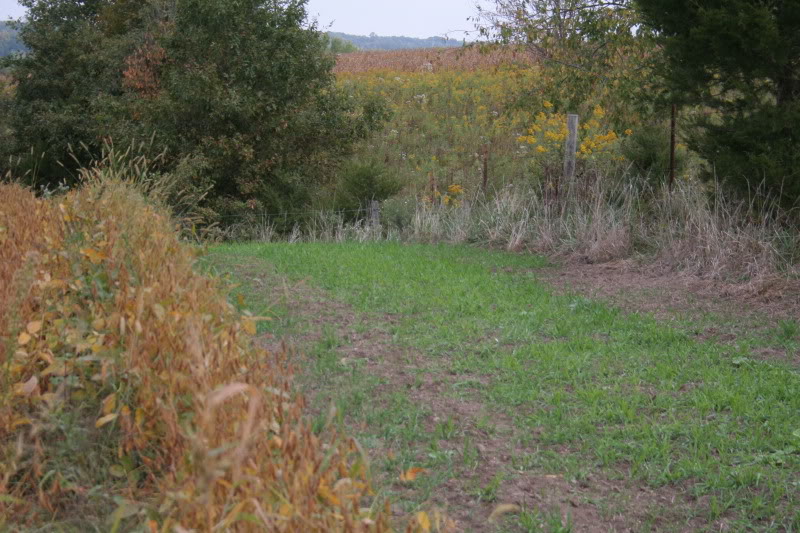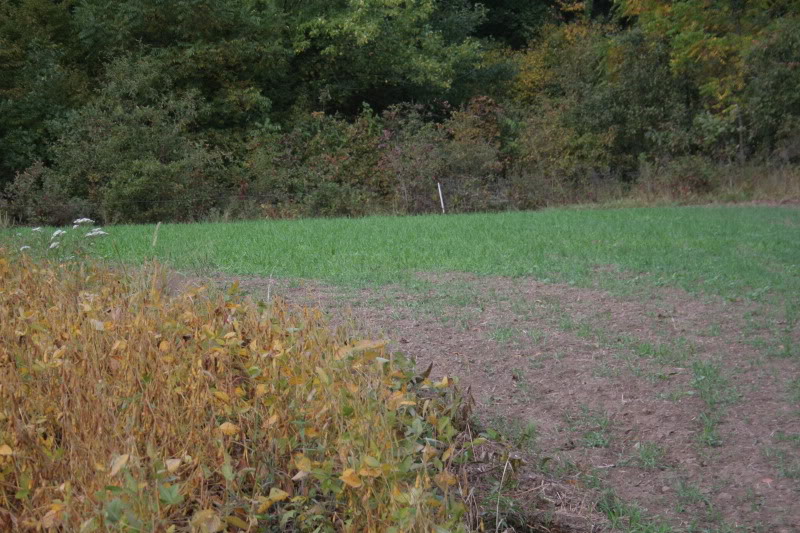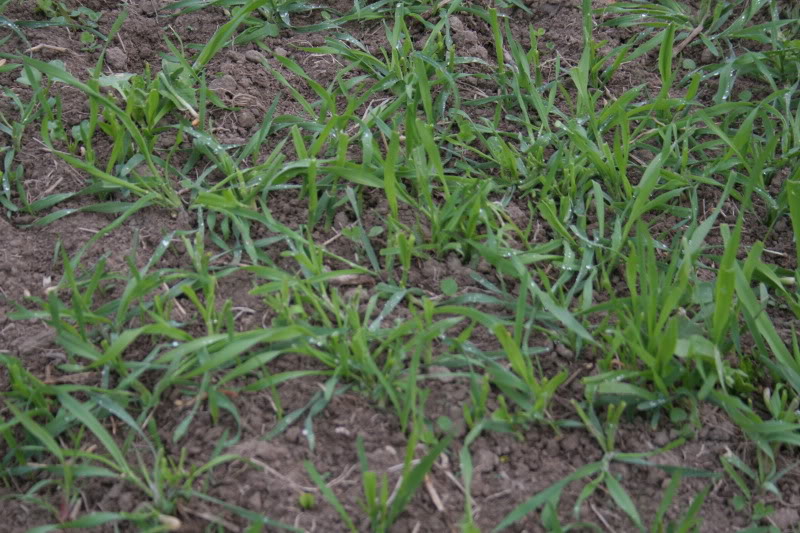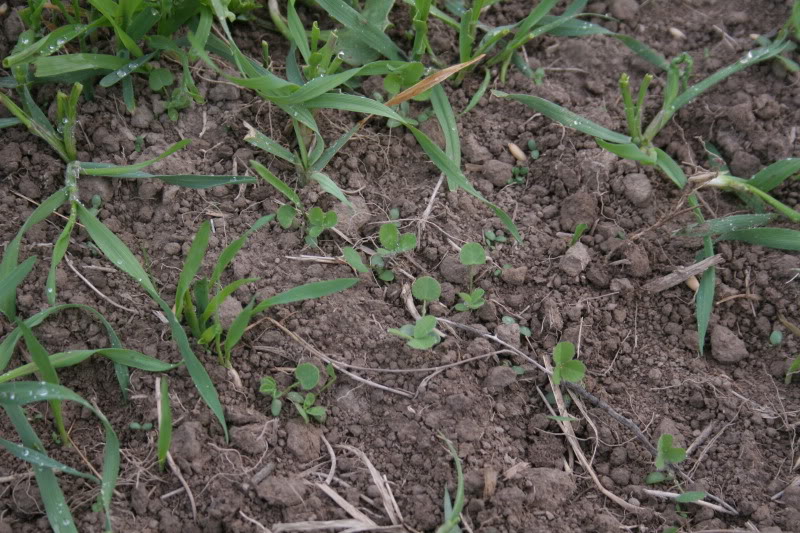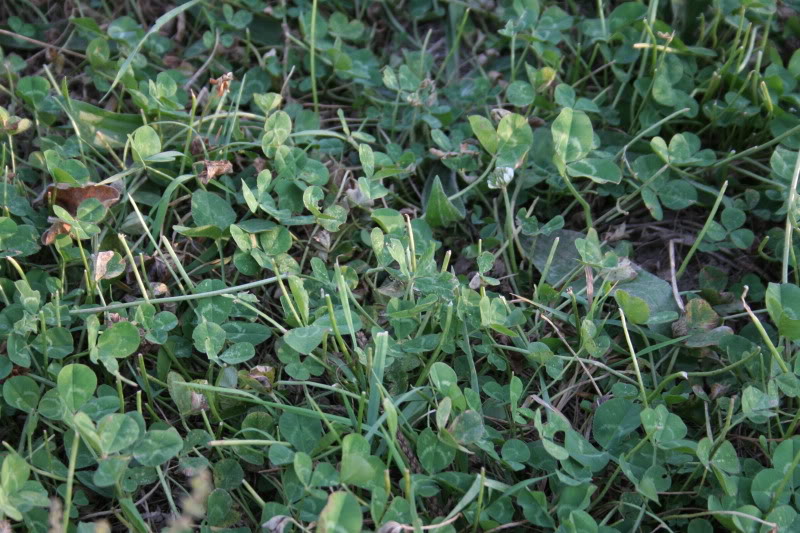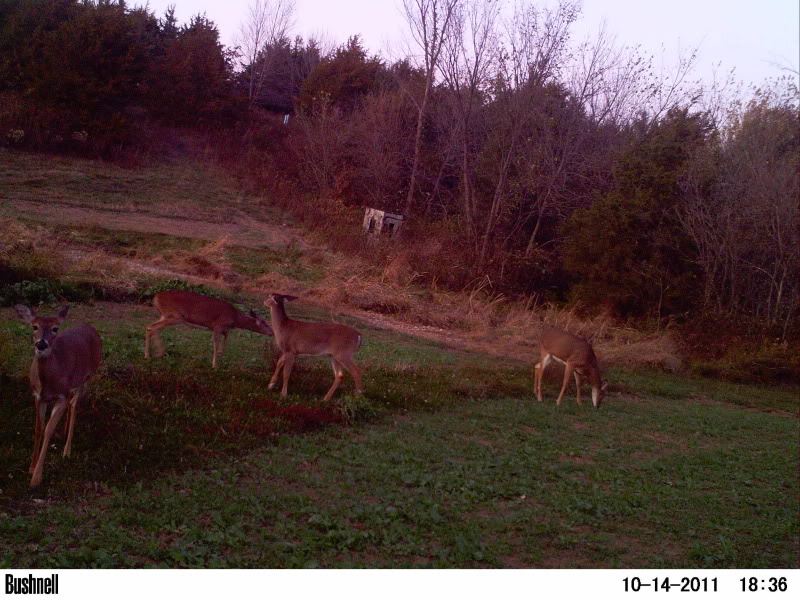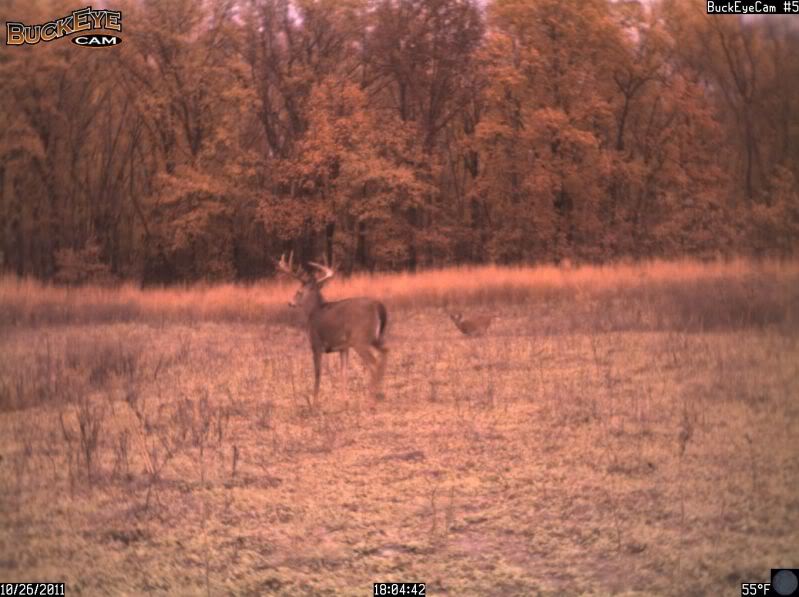October 9th, 2011
It's been an abnormally dry fall here in SE Iowa so depending on the area and rain received germination has been slow in some places although all in all not to bad. The tiny clover plants however may germinate and die if dry weather persists so I'll have to keep an eye on some areas and frost seed additional clover if need be.
The great thing about establishing clovers with rye in the fall is...no weeds to contend with and the rye/oats/peas and radish keeps deer fed while the clover is becoming established.
White clover around the perimeter is a great way to have something for deer to eat year around including something the second they step into the field which helps take the pressure off from other crops.
White cover is better able to deal with some shade and low nitrogen along a timber or fence line when compared to most other crops and a great crop to plant in odd areas of the field which then allows us to have multiple crops in one centralized feeding area.
I always establish white clover with the winter rye/oat/forage pea/forage radish combination and add red clover as well. Generally the red clover will not last more then two years leaving the white clover to take over. A side note here is that the rye is being grazed heavily despite being immediately beside standing soybeans and corn and in time the clover will be as well.
The tiny clovers need about 6 weeks before hard killing freezes in the fall but certainly will tolerate light frosts. In the spring the clover will explode to life and usually will out compete any weeds at that time, the exception is perennial grasses which are easily controlled with clethodim.
Clovers are an extremely important yet economical tool that each landowner should utilize in every plot or field. As you can see even a narrow band along the edge, waterways or odd areas can be planted and even 1-2% of a field planted to well fertilized clover can feed a tremendous amount of whitetails.
I use red clovers primarily for a plow down and temporary food source and white clovers for perennial food sources but they can be combined and Alsike clover along with a number of annual clovers that include Berseem, Crimson, Persian, Arrowleaf and more can be incorporated into your habitat program.
If you forgot to include clover with your fall cereal planting...consider frost seeding it late this winter...your deer and your soils will be glad you did...



